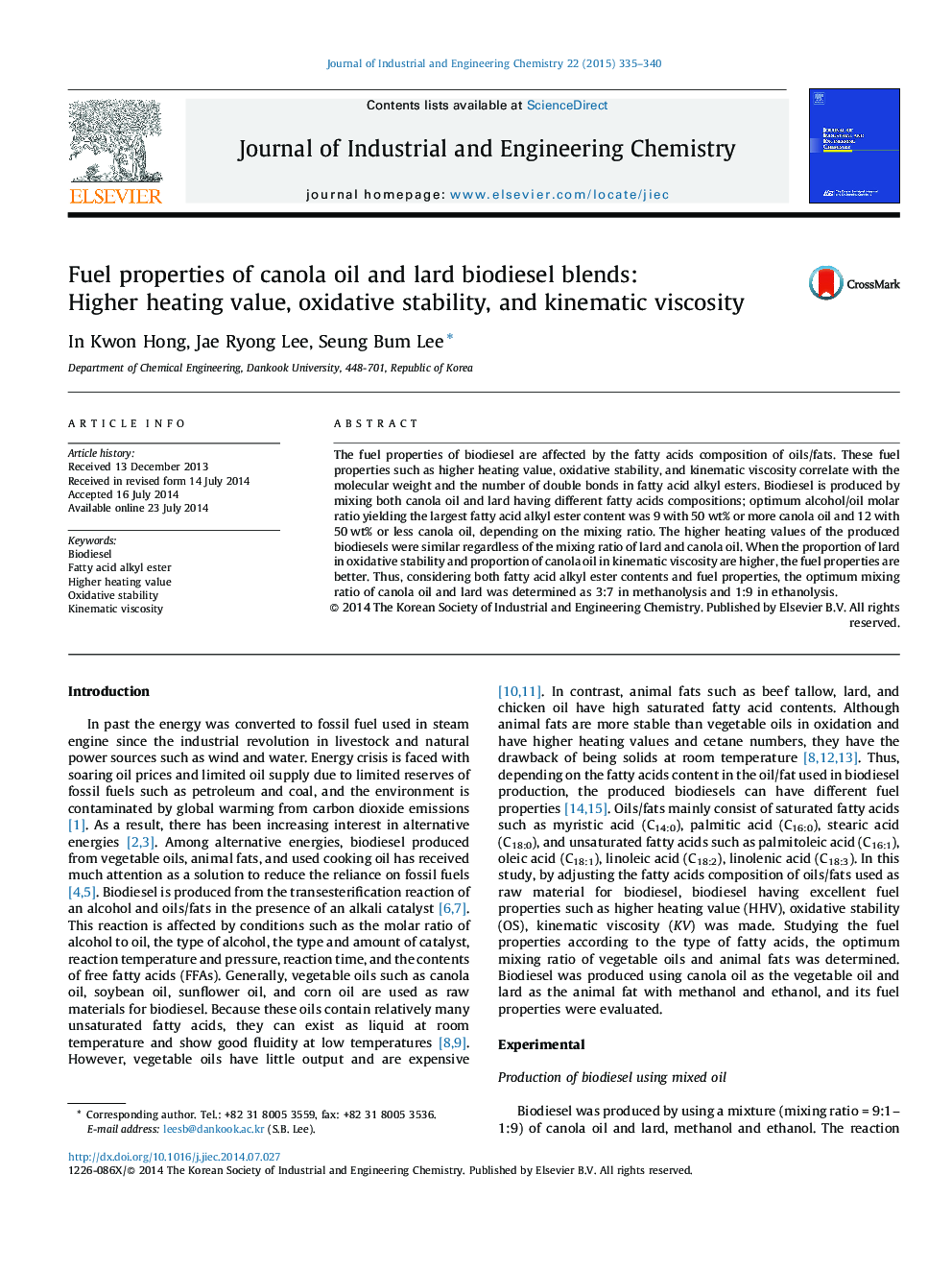| Article ID | Journal | Published Year | Pages | File Type |
|---|---|---|---|---|
| 228721 | Journal of Industrial and Engineering Chemistry | 2015 | 6 Pages |
The fuel properties of biodiesel are affected by the fatty acids composition of oils/fats. These fuel properties such as higher heating value, oxidative stability, and kinematic viscosity correlate with the molecular weight and the number of double bonds in fatty acid alkyl esters. Biodiesel is produced by mixing both canola oil and lard having different fatty acids compositions; optimum alcohol/oil molar ratio yielding the largest fatty acid alkyl ester content was 9 with 50 wt% or more canola oil and 12 with 50 wt% or less canola oil, depending on the mixing ratio. The higher heating values of the produced biodiesels were similar regardless of the mixing ratio of lard and canola oil. When the proportion of lard in oxidative stability and proportion of canola oil in kinematic viscosity are higher, the fuel properties are better. Thus, considering both fatty acid alkyl ester contents and fuel properties, the optimum mixing ratio of canola oil and lard was determined as 3:7 in methanolysis and 1:9 in ethanolysis.
